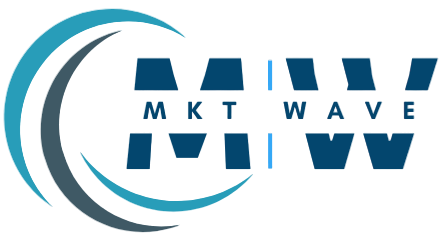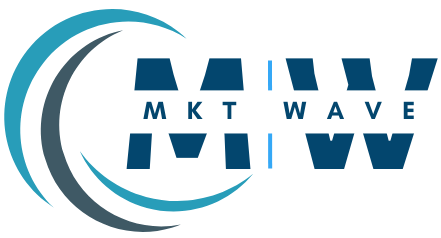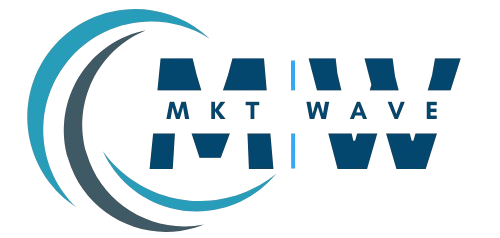Ever feel like your images are the unsung heroes of your website? You’re not
alone. While you’ve been busy perfecting your written content, those visuals
might be falling short in the SEO department. But fear not! It’s time to give your
images the spotlight they deserve. In this guide, we’ll walk you through the ins and
outs of image optimization – from choosing the right formats to nailing your alt
text. By the time you’re done, your images will be working overtime to boost your
search rankings and wow your visitors. Ready to transform your visuals from
wallflowers to SEO superstars? Let’s dive in!
What Is Image SEO?
Image SEO best practices are all about optimizing your visual content to improve
search engine rankings and user experience. It’s the art of making your images
work harder for your website’s visibility. By implementing techniques like proper
image alt text for SEO, you’re not only helping search engines understand your
content better, but also making your site more accessible to all users.
Image file size optimization plays a crucial role in page load speed, which directly
impacts your SEO performance. Additionally, choosing SEO-friendly image
formats ensures compatibility across devices and browsers. Remember, effective
image SEO isn’t just about pleasing algorithms – it’s about creating a seamless,
visually appealing experience for your audience while boosting your search
rankings.
How Search Engines Index And Understand Images
Search engines have come a long way in understanding visual content, but they
still rely heavily on textual cues. When it comes to image SEO best practices,
providing clear context is key. Search engines analyze file names, alt text, and
surrounding content to grasp an image’s meaning.
Boost Your Image SEO: Formats, Sizing, Alt Text and More 2
Image alt text for SEO plays a crucial role, acting as a description for visually
impaired users and search crawlers alike. But don’t forget about image file size
optimization – large files can slow down your site, negatively impacting SEO.
Lastly, choosing SEO-friendly image formats like JPEGs for photographs and
PNGs for graphics with text can boost your images’ visibility in search results.
Image SEO Best Practices
Optimizing your images is crucial for both search engines and users. Start by
choosing SEO-friendly image formats like JPEG for photographs and PNG for
graphics with transparency. Next, focus on image file size optimization to improve
load times. Compress images without sacrificing quality, aiming for file sizes
under 100KB when possible.
Don’t forget about image alt text for SEO. Craft descriptive, keyword-rich alt text
that accurately describes the image and its context within your content. This helps
search engines understand your visuals and improves accessibility for users with
screen readers.
Finally, use descriptive file names and consider implementing lazy loading to
further boost your image SEO efforts.
Choose The Right Image Format
When it comes to image SEO best practices, selecting the right file format is
crucial. JPEG is ideal for photographs, offering a good balance of quality and file
size. For graphics with fewer colors, PNG is your go-to, especially when you need
transparency. SVG works wonders for logos and icons, scaling beautifully without
losing quality. WebP, a newer format, provides superior compression and quality,
making it an excellent choice for faster loading times. Remember, the goal is to
strike a balance between visual appeal and SEO-friendly image formats. By
choosing wisely, you’ll boost your site’s performance and search engine rankings.
Optimize Image File Names
When it comes to image SEO best practices, don’t overlook your file names.
Descriptive, keyword-rich file names help search engines understand your
Boost Your Image SEO: Formats, Sizing, Alt Text and More 3
images’ content. Instead of “IMG_1234.jpg”, try “red-leather-armchair.jpg”. Keep it
concise but informative.
Remember to use hyphens between words, not underscores or spaces. This
improves readability for both users and search engines. While you’re at it,
consider your image alt text for SEO. A well-crafted alt text not only boosts
accessibility but also provides another opportunity to incorporate relevant
keywords naturally.
By paying attention to these details, you’ll be on your way to mastering image SEO
and improving your overall search visibility
Write SEO-Friendly Alt Text
Alt text is crucial for image SEO best practices, helping search engines
understand your visuals. Craft descriptive yet concise alt text that accurately
represents the image content. Include relevant keywords naturally, but avoid
keyword stuffing. For example, instead of “dog,” try “golden retriever puppy
playing in park.” Remember, image alt text for SEO isn’t just for search engines –
it’s also essential for accessibility, helping visually impaired users navigate your
site. Aim for clear, informative descriptions that enhance both user experience and
search visibility.
Define Your Dimensions
When it comes to image SEO best practices, size matters. Choosing the right
dimensions for your images can make a big difference in both loading speed and
visual impact. Aim for a balance between quality and file size optimization.
For hero images, consider using 1600×900 pixels for a widescreen look. Blog post
images often work well at 1200×630 pixels. Product images might be best at
1000×1000 pixels for a square format.
Remember, the goal is to use dimensions that look crisp on various devices while
keeping file sizes manageable. This approach supports both SEO-friendly image
formats and user experience.
Make Your Images Mobile-Friendly
In today’s mobile-first world, optimizing images for smartphones is crucial for
image SEO best practices. Start by choosing SEO-friendly image formats like
WebP or AVIF, which offer better compression without sacrificing quality. Next,
focus on image file size optimization to ensure quick loading on mobile devices.
Aim for file sizes under 200KB when possible.
Don’t forget about responsive design. Use CSS to make images scale properly on
different screen sizes. This approach helps maintain image quality while adapting
to various devices.
Lastly, pay attention to image alt text for SEO. Craft descriptive, keyword-rich alt
text that accurately describes the image content, helping both users and search
engines understand your visuals.
Add Images To Your Sitemap
Don’t forget about your sitemap when optimizing for image SEO best practices!
Including your images in your XML sitemap can give search engines a clearer
picture of your visual content. This step is often overlooked but can significantly
boost your image visibility.
To implement this strategy, add image-specific tags to your existing sitemap or
create a separate image sitemap. Include key details like image location, title,
caption, and license info. This extra effort helps search engines understand and
index your images more effectively, potentially improving your overall SEO
performance.
Remember, a comprehensive approach to Image SEO, including sitemaps, alt text
for SEO, image file size optimization, and using SEO-friendly image formats, can
make a real difference in your search rankings.
Add Structured Data
Want to supercharge your Image SEO best practices? Structured data is your
secret weapon. By adding this special code to your website, you’re essentially
giving search engines a cheat sheet about your images. This extra context helps
search engines understand and categorize your visuals better, potentially boosting
your visibility in image search results.
Boost Your Image SEO: Formats, Sizing, Alt Text and More 5
Don’t worry, it’s not as complicated as it sounds. Tools like Google’s Structured
Data Markup Helper can guide you through the process. Just remember, while
structured data won’t directly impact your SEO-friendly image formats or image
file size optimization, it’s a powerful complement to your other Image SEO efforts,
including perfecting your image alt text for SEO.
Image Optimization Key Takeaways
Mastering image SEO best practices is crucial for boosting your website’s visibility
and user experience. Start by choosing SEO-friendly image formats like JPEG for
photographs and PNG for graphics with transparency. Next, focus on image file
size optimization to improve loading speeds – compress images without
sacrificing quality.
Don’t forget the power of image alt text for SEO. Craft descriptive, keyword-rich
alt tags that accurately describe the image content. This not only helps search
engines understand your visuals but also improves accessibility for visually
impaired users.
Remember, optimizing images isn’t just about pleasing algorithms – it’s about
creating a better, faster, and more inclusive web experience for everyone.
FAQs on Image SEO best practices
Curious about image SEO best practices? Let’s tackle some common questions!
What are the best image formats for SEO?
When it comes to SEO-friendly image formats, JPEGs and WebPs are your go-to
choices. They offer a great balance of quality and file size.
How important is image alt text for SEO?
Very! Image alt text for SEO is crucial. It helps search engines understand your
visuals and improves accessibility.
What’s the ideal file size for images?
For image file size optimization, aim for under 200KB. This ensures fast loading
times without sacrificing quality.
Any other image SEO tips?
Don’t forget to use descriptive filenames and compress images before uploading.
These small steps can make a big difference in your image SEO strategy!
Conclusion
So there you have it – the key ingredients for supercharging your image SEO. By
nailing the basics like file formats, sizing, and alt text, you’ll be well on your way to
climbing those search rankings. Remember, it’s all about finding that sweet spot
between SEO-friendly and user-friendly. Don’t forget to test things out and see
what works best for your site. With a little effort and experimentation, you’ll be
serving up images that both search engines and users will eat right up. Now get
out there and start optimizing those pics! Your improved search visibility (and
happier site visitors) will thank you.



